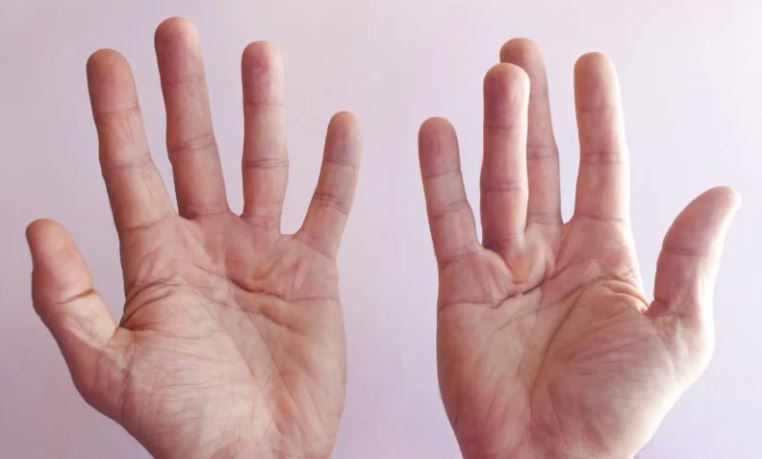If you’ve been dealing with Dupuytren’s contracture, you know how frustrating it can be. What starts as a small lump in the palm can slowly progress, making it harder to straighten fingers and perform simple tasks like shaking hands, holding a cup, or even typing. Traditional treatments often focus on surgery, injections, or stretching, but what about cold laser therapy? Could it be a gentler, non-invasive way to manage symptoms and maintain hand mobility?
Understanding Dupuytren’s Contracture
Dupuytren’s contracture is a progressive condition that affects the connective tissue in the palm, causing thickening and tightening of the fascia. Over time, this can lead to fingers being pulled into a bent position, making full extension difficult.
What Causes It?
The exact cause isn’t clear, but genetics play a significant role. It’s more common in men over 50, particularly those of Northern European descent. Other risk factors include diabetes, alcohol consumption, and certain medications.
Symptoms and Progression
- A small lump or nodule in the palm
- Formation of tight cords under the skin
- Fingers (especially the ring and pinky fingers) slowly curling inward
- Decreased grip strength and hand function
The biggest challenge with Dupuytren’s is that it tends to worsen over time, and there’s no way to reverse the changes once they’ve set in. This is where cold laser therapy might come in—by addressing inflammation and promoting tissue flexibility before things get too advanced.
How Cold Laser Therapy May Help
Cold laser therapy, also known as low-level laser therapy (LLLT), uses light energy to penetrate tissues and stimulate cellular repair. While it’s commonly used for joint pain, arthritis, and soft tissue injuries, some individuals with Dupuytren’s contracture have found that regular laser treatment reduces tightness and improves flexibility.
Nicola, who has been using the Handy Cure Low-Level Laser, shared her experience:
“I am using the Handy Cure Laser for breaking down the calcification of Dupuytren’s. The laser is definitely helping to keep my hand more supple, and the lump and tightness have softened considerably. It is not a one-hit wonder, and I need to use it regularly to get the problem to diminish.”
Potential Benefits of Cold Laser Therapy for Dupuytren’s
- Softens tight tissue – The laser’s ability to stimulate blood flow may help reduce the stiffness of the fascial cords, slowing contracture progression.
- Reduces inflammation – Chronic inflammation is linked to tissue thickening in Dupuytren’s. Laser therapy has been shown to reduce inflammatory markers, potentially slowing disease progression.
- Promotes flexibility – Regular use may help maintain range of motion, allowing for better hand function over time.
- Non-invasive & drug-free – Unlike steroid injections or surgery, cold laser therapy comes with minimal risks and can be used as part of a daily management routine.
Scientific Support for Cold Laser Therapy
While direct research on cold laser therapy for Dupuytren’s contracture is still emerging, findings from related soft tissue conditions are promising. For example, a study on PubMed highlights the benefits of low-level laser therapy (LLLT) as an effective adjuvant in flexor tendon repair—promoting healing, reducing pain, and improving flexibility. These results suggest potential applications of LLLT in fibrotic conditions like Dupuytren’s, where improved tissue response and joint mobility are key.
While more targeted studies are needed, many individuals report improvements in tissue texture and hand function with regular use of laser therapy.
Incorporating Cold Laser Therapy Into Your Routine
If you’re considering adding cold laser therapy to your Dupuytren’s management plan, consistency is key. Here’s how you can get started:
- Use daily or several times per week – As Nicola mentioned, it’s not a quick fix, but regular treatment can help keep the hand more supple.
- Target the affected areas – Focus on the nodules and tight cords in the palm.
- Pair it with stretching – Hand stretches and massage can enhance results by keeping the tissue flexible.
- Be patient – Progress may be slow, but subtle improvements in hand movement and tightness can add up over time.
Final Thoughts: Is Cold Laser Therapy Worth Trying?
While cold laser therapy won’t reverse Dupuytren’s contracture, it may help slow progression, reduce stiffness, and improve flexibility—especially when combined with stretching and other non-invasive treatments.
If you’re looking for a gentle, drug-free option to help manage your symptoms, the Handy Cure Low-Level Laser could be a useful tool in your daily routine. And the best part? You can treat yourself at home, making it a convenient way to stay on top of your health.
Have you tried cold laser therapy for Dupuytren’s? If so, how has it worked for you? Let’s keep the conversation going!
References:
Poorpezeshk N, Ghoreishi SK, Bayat M, Pouriran R, Yavari M. Early Low-Level Laser Therapy Improves the Passive Range of Motion and Decreases Pain in Patients with Flexor Tendon Injury. Photomed Laser Surg. 2018 Oct;36(10):530-535. doi: 10.1089/pho.2018.4458. PMID: 30300099.
